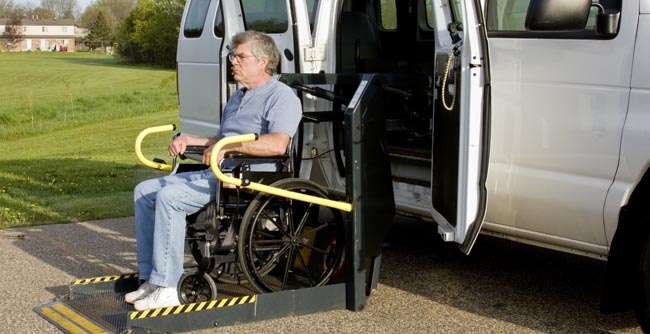Most people would agree that comfortable transportation is a valued asset that many of us take for granted. For wheelchair-bound individuals comfortable transportation often means having access to a wheelchair-accessible van. A wheelchair accessible van provides reliable transportation to those with special needs giving wheelchair dependent individuals the freedom to run errands, go to appointments, or simply enjoy a road trip. If you are thinking about purchasing a wheelchair accessible van, here are some considerations to help you choose the best mobility options to suit your individual requirements.
Wheelchair Dimensions
If you are thinking about purchasing a wheelchair-accessible van to transport a loved one, you will first need to know the dimensions of the wheelchair that you will need to transport. These dimensions are important because they will indicate the size of vehicle you need. The van must allow for the wheelchair and other mobility equipment to fit inside the van.
In general, consider these dimensions:
-
Height from the floor to the top of the individual's head when they are seated in their wheelchair
-
Width of the wheelchair
-
Width of the wheels
-
Length of the individual when seated in the wheelchair (from the back of the wheelchair to the extension of their legs)
-
Weight of the individual and the mobility equipment
Ramps
Wheelchair van conversions feature ramps to help a wheelchair roll easily into the van. There are 2 types of common ramps available: foldout and in-floor ramps.
Foldout Ramp: A foldout ramp is the most popular type of ramp. It is either manual or electronically operated. When not in use, a foldout ramp generally rests upright along the inside of the closed sliding side van door. A foldout ramp works well when placed over curbs or other impediments. It is a normally more economical option than an in-floor ramp.
In-Floor Ramp: An in-floor ramp is stored under the floor of the van. In-floor ramps are available that are either manual or electronic.
Van Entry
Wheelchair accessible vans feature either side-entry or rear entry. This entry point is important when you are considering where to park the vehicle.
Side Entry: With side entry, you can enter and exit safely on the curbside of the van away from traffic. Upon entry, the wheelchair person can either sit in the passenger position or drive while remaining seated in the wheelchair. One of the main benefits of a side entry wheelchair accessible van is that the back of the van's cargo area remains open for transportation of items or storage. A side entry wheelchair accessible van tends to be more expensive than a rear entry van.
Rear Entry: A rear entry wheelchair accessible van does not require a wide parking space so can easily park anywhere. A special channel is installed in the middle of the floor of the van. It runs from the second row to the rear of the vehicle to allow access for the wheelchair to traverse the distance. A rear entry van usually has enough room to comfortably carry two wheelchairs.
Additional Features
Wheelchair accessible vans also have numerous extra features available that can easily be added to the van per the customer's request or needs. Items such as wheelchair tie-downs, electronically monitored wheelchair docks, driver hand controls, and transfer seats are all options that make a wheelchair accessible van conversion customizable per an individual's specific needs.
At Caring Senior Service, our expert staff is comprised of extremely knowledgeable, friendly, and trusted professionals who take pride in helping your loved one manage their daily activities. Contact a Caring team today to learn more!

